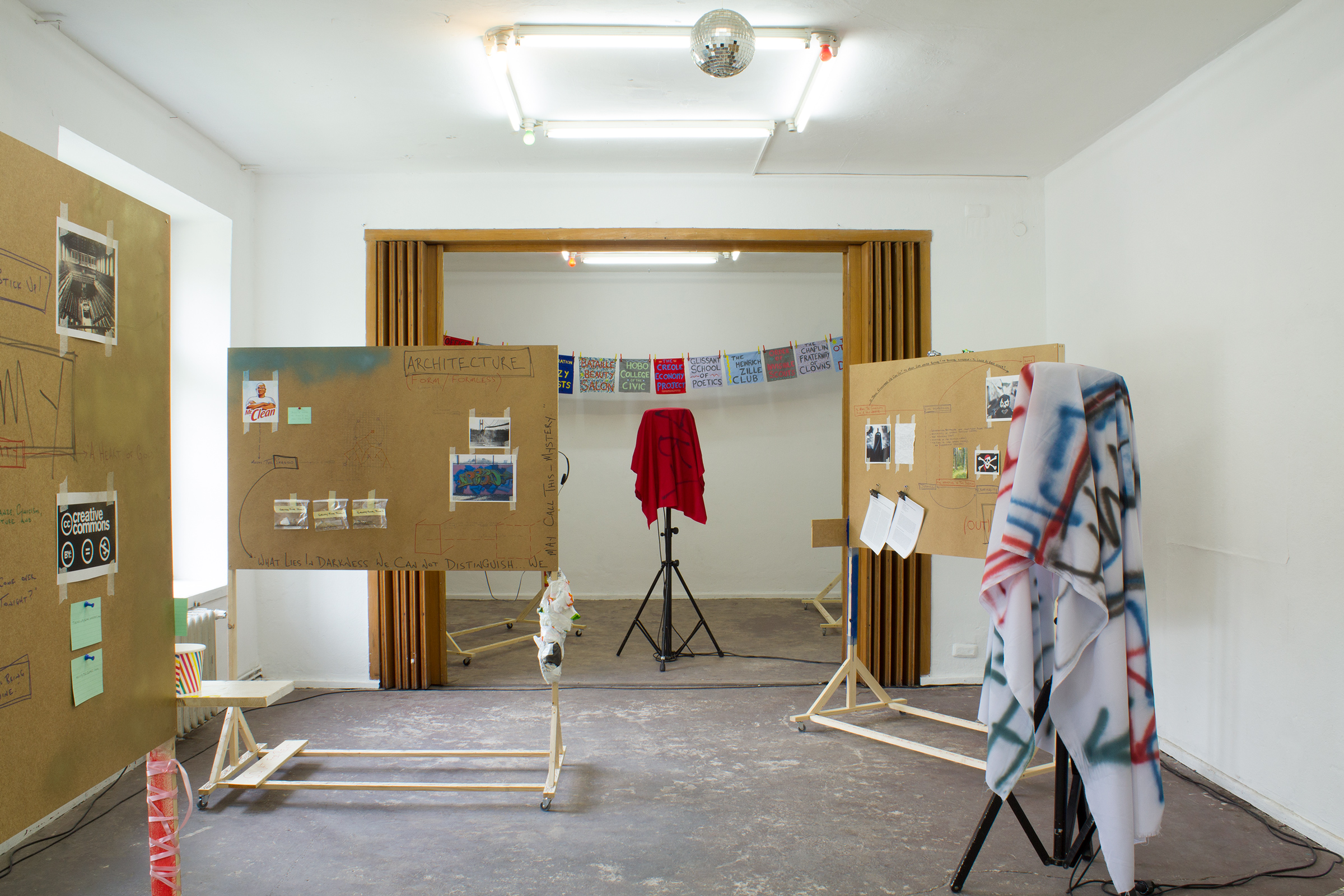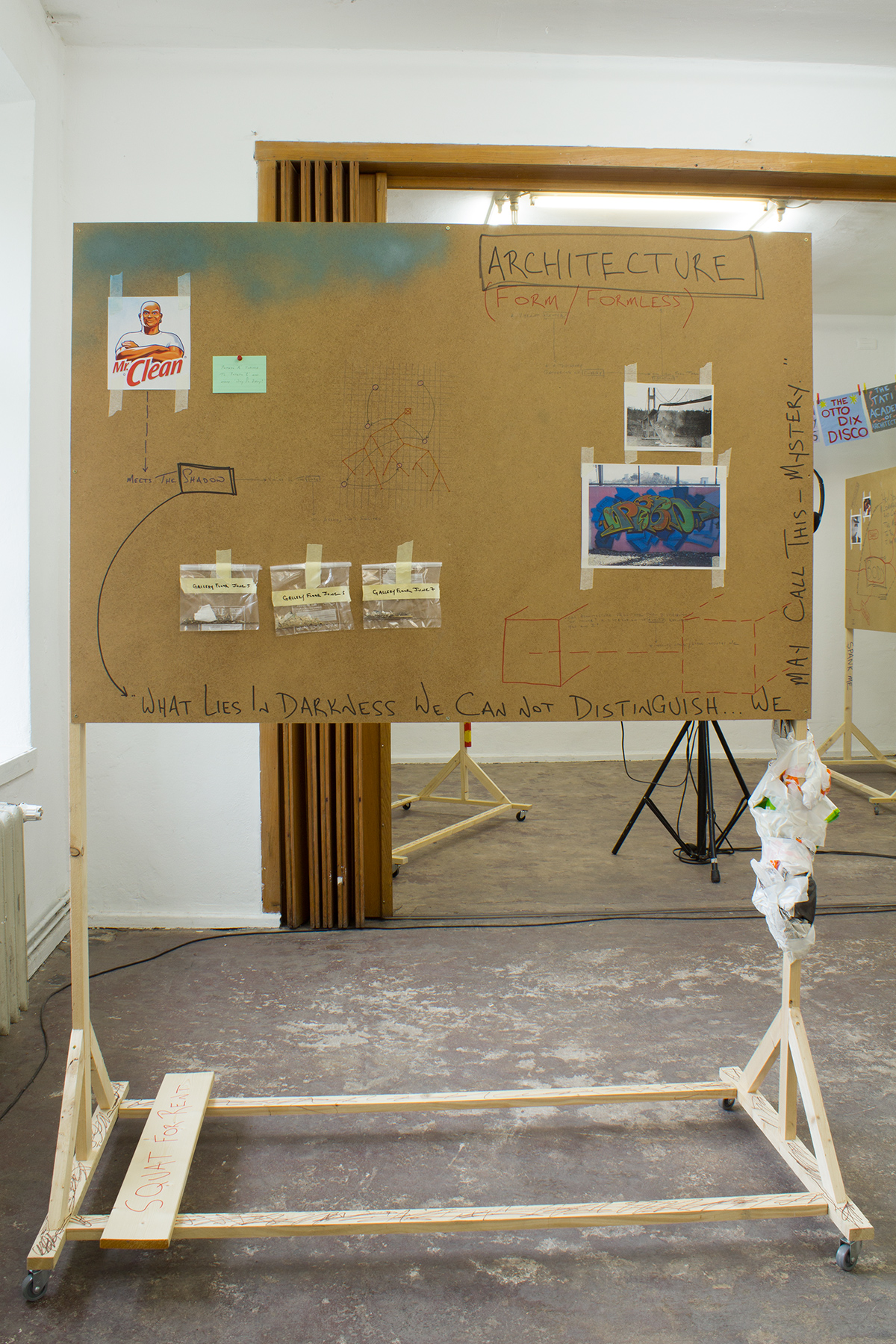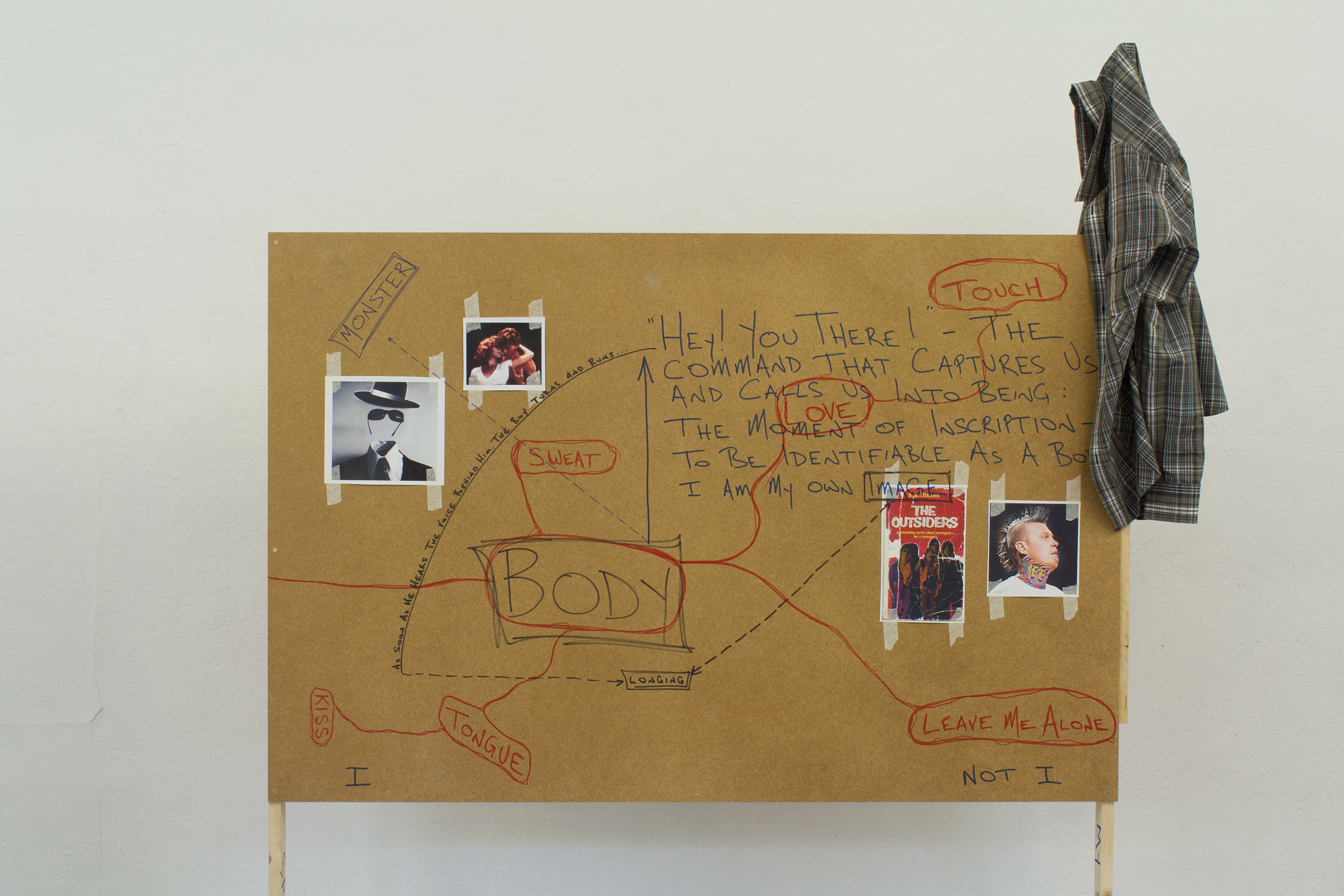Preparations for Common Recognition
2013
Place: Los Angeles, 1998. It is night. The action takes place at a rock club, located in the neighborhood of Silver Lake. It is a small though important club, where a certain sub-cultural scene has developed in recent years: it is a venue where people gather to witness the emergence of the new.
We are located in the crowd, as part of the event.
The following dialogue takes place here, yet we must imagine that everything has stopped: the people, the music, the action. It is a frozen moment. Within this moment, three voices emerge: the band, the spectator, and the stranger. A conversation ensues. They speak to each other, at each other, around each other. It is a conversation of interruption, capturing three contrasting perspectives onto the event of culture.
During this scene, the club transforms into an uncertain space – a type of research center, an archive, a space of references and diagrams, a sort of office dedicated to the theme of discord and disagreement emerges. We enter this space.
Based on an experience of disruption the artist had while attending a rock concert in 1998, the work is centered around a multi-channel audio play of three voices – the band, the spectator, and the stranger. Visitors enter the scene and follow the voices as they debate each other on questions of subjectivity, social space and a politics of listening, each taking a particular perspective onto what constitutes the “musical event”. The work sets out to consider moments of interruption and disruption as being generative of social encounter, allowing for knowing the other. As the urban theorist Richard Sennett suggests, disorder is supportive of the human social adventure.
In addition to the multi-channel audio play, a series of 6 constructed panels are built and located in the space. These function as an extended “diagram of interruption” and attempt to map the ways in which formal structures or systems, such as language, law, media and architecture, are centered around what such systems exclude. Through such a view, what is marginalized or taboo is often defining the very center of a social order.
Exhibited at General Public, Berlin, June 2013






